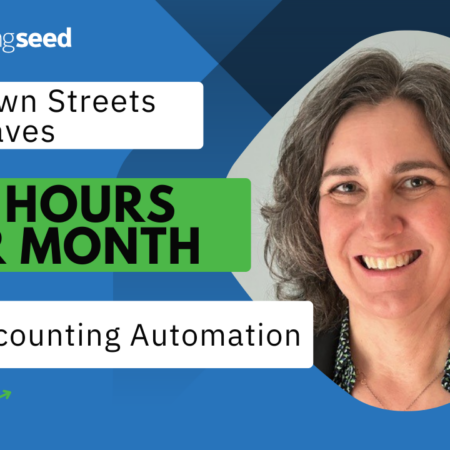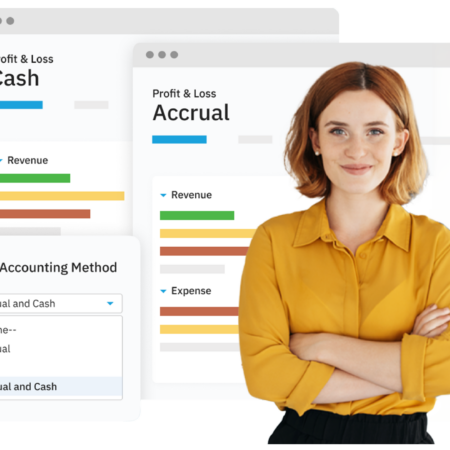
Building a business is something to be proud of—and it’s exciting. But entering receipts, invoices, and inventory purchases into your files, not so much. Few entrepreneurs get the same buzz from accounting tasks that they do from launching a new product.
It may be tempting to postpone accounting procedures so you can concentrate on the cool parts of entrepreneurship, but you’ll quickly realize that’s a mistake. Keeping your ledgers up to date lets you see when you’re running short of cash, and whether your new project’s expenses are ballooning. If you’re not on top of your financials, money problems can blindside you.
With this accounting checklist, you can master bookkeeping even if you hate it. We’ll show you how to set up a checklist for accounting that will make bookkeeping workflows as routine as checking your email. And when you’re out of pocket, your staff can fill in by following the checklist. That’s the beauty of well-defined workflows.
Accounting Daily Task Checklist
Taking time out every day to keep up with the daily tasks of an accountant may sound like a distraction from the important work of growing your company. In reality, keeping track of your income, expenses, and tax bills is essential to keeping your business in the black.
Drawing up an accounting daily task checklist—and lists for weekly, monthly and quarterly tasks—requires some up-front work, but it pays off in the long run. Once you have an accounting checklist in place, you don’t have to think about what you need to do. Sit down, attack the different items on the list, and don’t stop until they’re done. Then you can put accounting out of your mind.
Develop accounting processes that work with your schedule. If you can enter transactions as soon as they happen, great. But if setting aside dedicated accounting time at the end of the day works better, go that route.Once you have a time frame, commit to it. Let your team know you’re focusing on accounting tasks at the appointed hour, and on nothing else.
Here are the essential daily accounting tasks:
1. Record transactions
On a given day, your business may need to account for cash sales, sales on credit, inventory purchases, and office expenses. One item on your accounting checklist should be to record transactions daily, including revenue, expenses, accounts receivable, and accounts payable.
It’s particularly important to record cash transactions in your daily accounting procedures because it’s easy to lose track of them. If, say, someone takes $20 from petty cash to buy office supplies, you need to maintain a paper trail, even if you’re swamped by other priorities.
Don’t assume you’ll remember if you don’t keep records. Even if an unexplained $20 shortfall is a trivial fraction of your day’s cash flow, it can add up over time. And without records there’s no way to distinguish legit expenses from an employee helping themselves to some extra cash.
Look at your current workflows and see how they can improve. For example, if you and your team have trouble keeping track of receipts or invoices, assign some designated folders. Direct everyone to file the paperwork on those items as soon as it’s created. When the time comes to work on your accounting checklist, you’ll have the documentation at hand.
2. Deposit cash and checks.
If your company does a lot of business in cash or checks, don’t leave it sitting around too long. The best practice here is to make a daily trip to the bank to deposit that revenue. This also builds up the cash cushion in your account in case of an unexpected expense in your future.
3. Track your cash flow
At the end of the day, add up the cash you have on hand. Compare it with the amount your sales report says you should have. For example, if you run a restaurant and it started the day with $1,500 in the safe, then took in $850, you should have $2,350 when you close. If not, what happened?
The problem could come from a cashier error, a purchase nobody reported making, or a “dine-and-dash” case. It’s important to figure it out so you can avoid similar problems in the future, and so you can gain a clearer picture of your business finances and health.
4. Update your inventory
Whether your inventory is diamonds or paper plates, update your stock in your inventory management platform the day you get shipments in. That way your team knows whether they have the items a customer asks for.
5. Back up data
Cloud-based accounting software can back up your data automatically and instantly. Otherwise, backing up everyday is the ideal. The odds are that if you skip a day, your computer won’t crash or be hacked the very next night. Over time, though, the odds of something happening to your customer data, invoices, and digital ledgers are good. Without backups, it’s all lost.
Read on for more tips about Accounting Cybersecurity Best Practices.
Accounting Weekly Task Checklist
If you’ve established good daily accounting processes, it’ll be much simpler to complete the tasks on your weekly accounting checklist. If your daily workflows are sound and everyone follows them, you won’t have to worry that you lost track of any bills when you review your accounts payable.
1. Submit invoices
Getting paid for services rendered is the lifeblood of every business. Believe it or not, forgetting to invoice clients is a common small-business error. Even your steady customers may not send their payment until they receive your invoice. Incorporating invoices into your weekly accounting tasks keeps you from falling behind on collecting what you’re owed.
Submit invoices for any unpaid jobs you completed during the week. Make it clear what you’re charging for, including parts, labor, fees, and taxes. If you’ve been recording all your transactions every day, all the information you need should be at your fingertips.
2. Go over employee timesheets
Even if you don’t pay your staff on a weekly basis, it’s a best practice to review the time sheets every week. If nothing else, this pushes your employees to submit them every week. The longer they delay the task—they may hate paperwork just like you do—the worse their memory gets. Tracking their time can also alert you if, say, your team is running up a lot of overtime.
Accounting Monthly Task Checklist
The accounting checklist for monthly tasks covers the things you don’t have to stay on top of every day or every week. Each month, you should follow the same accounting procedures you do for your accounting daily task checklist: find a time to work on them and keep that appointment. These are bigger, more complex tasks so you’ll need to set aside more time to complete them.
1. Review accounts payable and receivable
Your vendors don’t like late payments any more than you do. Going over accounts payable regularly keeps you on top of the bills that have come due. Some vendors offer discounts for early payment, so reviewing accounts payable should keep you from missing out.
Review accounts receivable to see if there are invoices you’ve sent that haven’t been paid. If it’s past 30 days (or 60) you know to send out another invoice and ask the client to settle their account.
Here’s a helpful resource about Vendor Payment Processes for more advice on mastering invoicing.
2. Review your budget variance
Even the best budget planning can’t anticipate everything. Expenses come in high, revenue slumps, and equipment needs repairs. Every month, review your budget variance to see how closely your projections match reality. A little variation is normal but if there’s a significant difference you need to figure out what went wrong and how it could affect your business.
3. Reconcile your bank statement
When the bank sends you your monthly statement, reconcile it with what your ledgers say is in the account. After you eliminate deposits and checks that haven’t cleared yet, your statement and your checkbook should match. If they don’t, figure out whether you entered some figures wrong, forgot to enter a payment received, or the bank’s computer glitched.
[/et_pb_text][et_pb_text _builder_version=”4.14.9″ _module_preset=”default” theme_builder_area=”post_content” hover_enabled=”0″ sticky_enabled=”0″]
Accounting Quarterly Task Checklist
The big tasks on this quarterly accounting checklist involve your tax bill. You do not want to miss a payment or make it late.
1. Pay sales tax
Calculating quarterly sales tax can be an exercise in tedium. If you have a half dozen stores spread out around the county, they might each charge a different sales-tax rate depending on which tax districts they fall into. Still, if you’ve stuck with your daily accounting checklist and recorded sales and taxes when the purchases were made, figuring your tax bill will be easier.
2. Pay estimated tax
Federal and state estimated taxes are tricky to track because the schedule isn’t quite quarterly. Payments are actually due in April, June, September and January. Put these filings into some form of accounting quarterly task checklist anyway, because you have to file every time. Even if you don’t owe any tax, the IRS expects a form saying so.
Pro Tip: Accounting Seed offers sales tax calculation based on the seamless integration of your inbound revenue and outbound expenses.
Financial Reporting at Any Time
Whether your accounting department handles reporting on a daily, weekly, monthly, or quarterly basis (or all of the above,) master a process for streamlining your reporting workflows as a part of your accounting process checklist. And don’t forget about year-end. Give considerations towards the accounting data that’s most relevant to your reporting, and ensure you have easy access to financial dashboards that showcase real-time data to pull into your reports.
Pro Tip: With Accounting Seed, reports can be auto-generated and shared with relevant company leadership. If you’re embracing accounting software, you can cross generating reports off of your to-dos since the platform will handle generation and submission of reports for you.
The Accounting Automation Alternative
The more your business grows, the more transactions you’ll need to enter. If you cringe from the workload and time involved in your daily accounting checklist, there are ways to take some of that work off your hands.
Outsourcing regular accounting tasks to a professional accountant is one option, if you can afford it. Even if you have an accountant on the payroll, chances are that their time is better used on higher-order tasks.
By contrast, paying for an automated accounting system such as Accounting Seed, can be a more cost-effective alternative for achieving efficient accounting procedures.
Accounting Seed can link your ledgers with your bank and reconcile your statements instantly. It can calculate sales tax, taking into account all the different rates you pay. It can automate regular billing for customers and paying vendors. Accounting Seed can take your financial information, and generate a budget analysis or cash-flow statement whenever you need it.
If that sounds like a simpler, saner approach, contact Accounting Seed about a demo. You’ll be amazed how much easier ticking off your checklists of accounting tasks can become.
Read on:
- Top 7 Issues Accountants Face Today
- Small Business Accounting Tips
- Startup Accounting Tips: Scaling a Growing Startup
- Accounting Software for Accountants: What to Look For
- DCAA Compliant Accounting Software: What to Look For
- What are the International Accounting Standards (IAS)?
- Top 8 Reasons Why IT Implementations Fail
- What is Cash Disbursement in Accounting?
- Accrued Expenses: What are They and How to Report Them?
- Intro to Accounts Payable and Purchase Order Accounting
- What is Integrated Accounting Software: Everything to Know
- Non-Profit Accounting Software: What to Look For
A native Salesforce accounting app, Accounting Seed, provides a full 360-degree view of your business’ performance to help you and your team make the best decisions possible. Not on Salesforce? Our software can be customized to work with any system you have through a reliable connection.
See Accounting Seed in action
Get a close-up view of how accounting on Salesforce can eliminate the need for costly integrations—and silos of mismatched information—by sharing the same database as your CRM.



